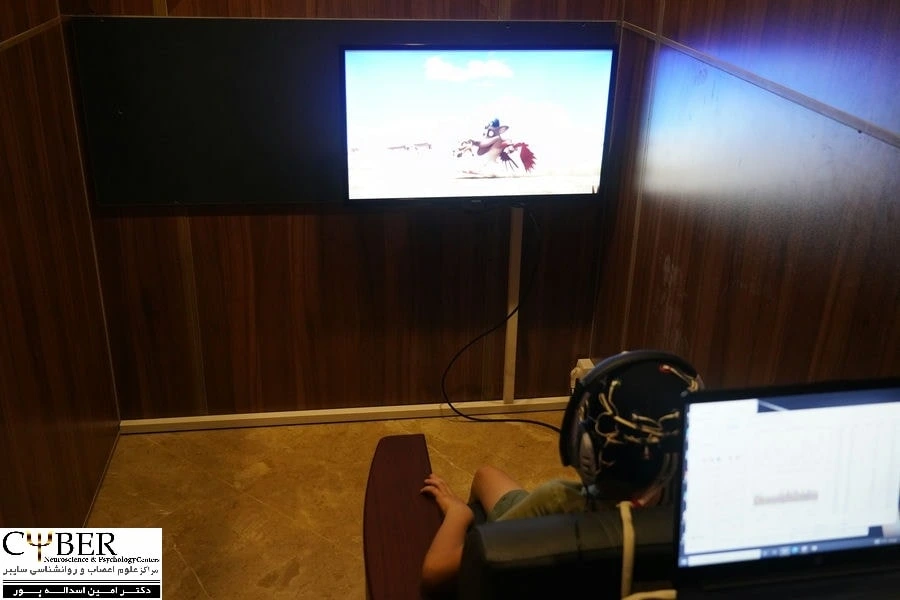Tic Disorder
Tic disorder, also known as Tourette’s syndrome, is a neurological condition that is characterized by involuntary movements or sounds known as tics and in this article, we are going to explain the causes of tics, symptoms and methods of diagnosis of this disorder.
These tics can range from mild to severe, and they may involve blinking, throat clearing, or vocalizations such as grunting or shouting. While the exact cause of tic disorder is not fully understood, research suggests that genetics and environmental factors may play a role in its development.
Symptoms of Tic Disorder
The symptoms of tic disorder can vary from person to person and can include both motor tics and vocal tics. In the following article, we will explain each.
The severity and frequency of tics can also vary, and they may be more noticeable during times of stress or excitement. In some cases, tics may also be accompanied by other symptoms such as anxiety, depression, or obsessive-compulsive disorder.
Tics are sudden, repetitive movements or sounds that are involuntary and often difficult to control. While tics are common and often transient, they can become more severe and disruptive in some people, leading to a diagnosis of tic disorder. Understanding the symptoms of tic disorder is important for early recognition and treatment.
Motor Tics
Motor tics are movements that are sudden and repetitive. They can involve any part of the body, but are most common in the face, neck, and shoulders. Examples of motor tics include eye blinking, facial grimacing, head jerking, shoulder shrugging, and repetitive arm or leg movements.
Motor tics can be simple or complex. Simple motor tics are brief and involve only one or a few muscle groups. Complex motor tics involve more coordinated movements and may involve multiple muscle groups. Examples of complex motor tics include hopping, twirling, or bending in a specific way.
Vocal Tics
Vocal tics are sounds or utterances that are sudden and repetitive. They can involve any type of sound, including grunts, coughs, throat clearing, sniffing, and tongue clicking.
Vocal tics can be simple or complex. Simple vocal tics involve brief and repetitive sounds, while complex vocal tics involve more complex utterances, such as repeating a word or phrase or making animal sounds.
Diagnosis of Tic Disorder
Tic disorder is diagnosed when a person experiences motor or vocal tics for at least one year. The tics must be present for a significant portion of the day, occurring nearly every day or intermittently. The tics must also cause significant distress or impairment in social, academic, or occupational functioning.
In some cases, tic disorder can be accompanied by other conditions, such as Hyperactivity , OCD, or anxiety. These conditions can exacerbate symptoms and make them more difficult to manage.
Here, we will discuss the diagnosis process for tic disorder, including the symptoms, evaluation, and diagnostic criteria.
Attention: Tics typically develop in childhood or adolescence and can persist into adulthood.
Evaluation for Tic Disorder
If tic disorder is suspected, a comprehensive evaluation should be performed to rule out other potential causes of tics. This evaluation may involve a physical examination, medical history, and neurological assessment.
A medical history may help identify potential triggers for tics, such as stress, anxiety, or medication changes. A neurological assessment may include tests to evaluate motor function, coordination, and reflexes.
Diagnostic Criteria for Tic Disorder
To receive a diagnosis of tic disorder, a person must meet specific criteria outlined in the Diagnostic and Statistical Manual of Mental Disorders (DSM-5). These criteria include:
- Presence of one or more motor tics and/or vocal tics that persist for at least one year
- Onset of tics before age 18
- Tics that are not due to a medication or medical condition
- Tics that cause significant distress or impairment in social, academic, or occupational functioning
The severity and impact of tics may vary, and tic disorder can be classified as mild, moderate, or severe based on the extent of impairment in daily functioning.
Causes of Tic Disorder
The exact cause of tic disorder is not fully understood, but research suggests that a combination of genetic and environmental factors may play a role. Studies have shown that tic disorder tends to run in families, which suggests that there may be a genetic component to the condition. However, not all people with tic disorder have a family history of the condition.
Environmental factors may also contribute to the development of tic disorder. For example, certain infections, such as strep throat, have been linked to the onset of tics in some people. Other environmental factors that may increase the risk of tic disorder include exposure to toxins or trauma to the brain.
Genetic Factors
Research has shown that tic disorders tend to run in families, suggesting a genetic component to their development. Studies have identified several genes that may be involved in the development of tic disorders, including those that play a role in dopamine regulation, a neurotransmitter that is involved in movement control.
Studies have also found that the risk of developing tic disorders is higher in identical twins compared to fraternal twins, further supporting a genetic influence on their development.
Environmental Factors
While genetics play a significant role in the development of tic disorders, environmental factors can also play a role. Exposure to certain environmental factors, such as infections or toxins, has been linked to an increased risk of developing tic disorders.
Infections
Several studies have found an association between infections and the development of tic disorders. For example, streptococcal infections, such as strep throat, have been linked to the development of a type of tic disorder known as pediatric autoimmune neuropsychiatric disorders associated with streptococcal infections.
Toxins
Exposure to certain toxins has also been linked to the development of tic disorders. For example, exposure to lead, a toxic heavy metal, has been associated with the development of tic disorders, particularly in children. Other environmental factors that may increase the risk of developing tic disorders include prenatal and perinatal complications, as well as stressful life events.
Treatment Options for Tic Disorder
there are several treatment options available to help manage symptoms but, the only real cure for this disorder is to use Loreta Neurofeedback as we discuss below.
- Medications can be used to reduce the severity and frequency of tics. However, these medications can have side effects, and they may not be effective for everyone.
- Behavioral therapies, such as habit reversal training, can also be effective in managing symptoms of tic disorder. This therapy involves identifying triggers for tics and learning strategies to reduce or eliminate them. Other behavioral therapies such as cognitive-behavioral therapy and exposure and response prevention may also be helpful for managing symptoms of tic disorder.
- In some cases, deep brain stimulation (DBS) may be recommended for severe cases of tic disorder that do not respond to other treatments. DBS involves implanting electrodes in the brain that deliver electrical impulses to specific areas of the brain. This therapy can help reduce the severity and frequency of tics, but it is not without risks, and it is typically reserved for severe cases that do not respond to other treatments.
Additionally, practicing self-care can help manage symptoms of tic disorder. This may involve stress reduction techniques such as meditation or exercise, getting enough sleep, and eating a healthy diet. It is also important to prioritize activities that bring joy and fulfillment, such as hobbies or spending time with loved ones.
understanding and support. It can also be helpful to connect with support groups or other people living with tic disorder to share experiences, advice, and coping strategies.
Loreta Neurofeedback: An Emerging Treatment for Tic Disorders
Tic disorders, including Tourette’s syndrome, are neurological conditions that can cause involuntary movements or sounds known as tics. While medications and behavioral therapies can be effective in managing symptoms, an emerging treatment option called Loreta neurofeedback is showing promise in reducing the frequency and severity of tics.
What is Loreta Neurofeedback?
Loreta (Low-Resolution Electromagnetic Tomography) neurofeedback is a type of neurofeedback that uses EEG (electroencephalogram) technology to monitor brain waves in real-time. It is a non-invasive treatment that involves placing sensors on the scalp to measure brain activity, and then providing feedback to the patient in the form of visual or auditory cues.
During a Loreta neurofeedback session, the patient is presented with a visual or auditory stimulus, such as a game or music, while their brain activity is monitored. The feedback is designed to encourage the brain to shift into a more stable and balanced state, promoting better regulation of brain function.
How does Loreta Neurofeedback work for Tic Disorders?
Research has shown that people with tic disorders have abnormal patterns of brain activity, particularly in the prefrontal cortex and basal ganglia, which are involved in motor control and regulation. Loreta neurofeedback targets these areas of the brain, helping to regulate activity and reduce the frequency and severity of tics.
During a Loreta neurofeedback session, the patient is trained to increase activity in certain areas of the brain while decreasing activity in others. This helps to improve the balance and regulation of brain function, reducing the occurrence of tics.
Studies have shown that Loreta neurofeedback can be an effective treatment option for tic disorders. A 2018 study published in the Journal of Attention Disorders found that children with Tourette’s syndrome who received 20 sessions of Loreta neurofeedback showed significant reductions in tic frequency and severity compared to a control group. Another study published in 2020 in the journal of Neuropsychiatric Disease and Treatment found similar results in adults with tic disorders.
Benefits of Loreta Neurofeedback for Tic Disorders
One of the main benefits of Loreta neurofeedback is its non-invasive nature. Unlike other treatments such as medications or deep brain stimulation, Loreta neurofeedback does not involve surgery or the use of drugs, making it a safer and more accessible treatment option for some people.
Loreta neurofeedback is also personalized to each individual, as the treatment is tailored to target specific areas of the brain based on the individual’s brain activity patterns. This means that the treatment can be adjusted and optimized to achieve the best possible outcomes for each person.
In addition, Loreta neurofeedback is a relatively short-term treatment, typically requiring 20-30 sessions to see significant results. This makes it a convenient and time-effective treatment option for people with busy schedules.
Conclusion
Tic disorders can be challenging to manage, but emerging treatments such as Loreta neurofeedback are showing promise in reducing the frequency and severity of tics. By targeting specific areas of the brain, Loreta neurofeedback helps to regulate brain activity and improve the balance and stability of brain function.
results suggest that it can be an effective and safe treatment option. If you or someone you know is living with tic disorder, it may be worth exploring Loreta neurofeedback as a potential treatment option. For more information, follow our page on Twitter at the following address:


